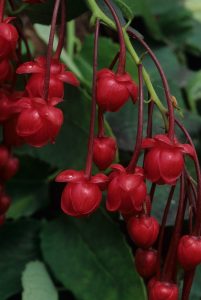The plants on this terrace represent one of the largest collections of cultivated Chilean plants, many of which have been collected by members of staff from RBGE during expeditions to Chile. They thrive in this area protected to the South & West by the Glasshouses, to the east by the magnificent Maytenus boaria and to the North by the wall that separates the public & private areas.
The unique flora of Chile has been driven by its isolation from neighbouring areas by the Pacific Ocean to the West, the High Andean mountain chain to the East and the Atacama Desert to the North. This has led to around 46% of the 5,000 species being endemic (only found in Chile), including 81 genera and 2 families. This diversity is mainly contained within Central Chile, with approximately 60% of the flora and endemic species occurring here.
RBGE has been involved in research and collaborative projects in Chile for more than a decade. Staff have helped to survey the flora and carry out inventory work, to enable species ranges and conservation status to be assessed, aid capacity building by training staff and members of the public and to establish in-situ conservation work with land-owners.
Conservation work has also been continued at RBGE, with many of the plants you can see growing here being threatened with extinction in the wild. One success has been the flowering of Valdivia gayana, which occurs in a small area of temperate rainforests in southern Chile (read more here). Some Chilean species have been in cultivation for more than 150 years, such as the Chilean Coral Plant (Berberidopsis corallina), whilst others have been introduced more recently, for example; a new pampas grass and several species of calceolaria.

